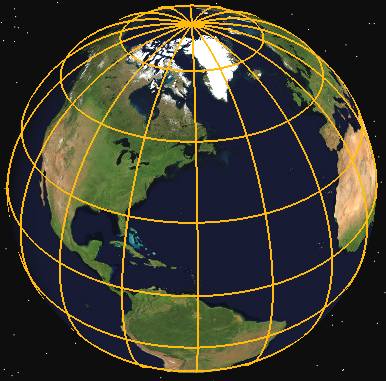|
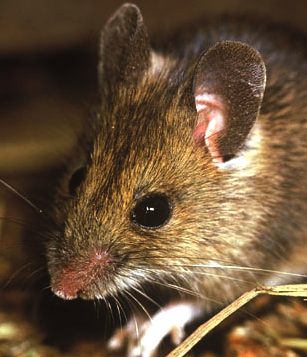
A mouse (plural: mice) is a small mammal belonging to the order of rodents, characteristically having a pointed snout, small rounded ears, and a long naked or almost hairless tail. The best known mouse species is the common house mouse (Mus musculus). It is also a popular pet. In some places, certain kinds of field mice are also common. This rodent is eaten by large birds such as hawks and
eagles. They are known to invade homes for
food and occasionally shelter.
The American white-footed mouse (Peromyscus leucopus) and the deer mouse (Peromyscus maniculatus), as well as other common species of mouse-like rodents around the world, also sometimes live in houses. These, however, are in other genera.
Cats, wild dogs, foxes, birds of prey, snakes and even certain kinds of
arthropods have been known to prey heavily upon mice. Nevertheless, because of its remarkable adaptability to almost any environment, the mouse is one of the most successful mammalian genera living on Earth today.
Mice can at times be vermin, damaging and eating crops, causing structural damage and spreading diseases through their parasites and feces. In
North
America, breathing dust that has come in contact with mouse excrement has been linked to hantavirus, which may lead to Hantavirus Pulmonary Syndrome (HPS).
Primarily nocturnal animals, mice compensate for their poor eyesight with a keen sense of hearing, and rely especially on their sense of smell to locate food and avoid predators.
Mice and rats are the most commonly used animals for laboratory tests.
Mice build intricate burrows in the wild. These burrows typically have long entrances and are equipped with escape tunnels/routes. There is some evidence from a new study that indicates that the architectural design of a burrow is a result of what is pre-written in a mouse's DNA.
LABORATORY
MICE
Mice are common experimental animals in biology and psychology primarily because they are mammals, and also because they share a high degree of homology with humans. They are the most commonly used mammalian model organism, more common than rats. The mouse genome has been sequenced, and virtually all mouse genes have human homologs. They can also be manipulated in ways that would be considered unethical to do with
humans. A knockout mouse is a
genetically engineered mouse that has had one or more of its genes made inoperable through a gene knockout.
There are other reasons why mice are used in laboratory research. Mice are small, inexpensive, easily maintained, and can reproduce quickly. Several generations of mice can be observed in a relatively short period of time. Mice are generally very docile if raised from birth and given sufficient human contact. However, certain strains have been known to be quite temperamental. Mice and rats have the same organs in the same places, just of different size.
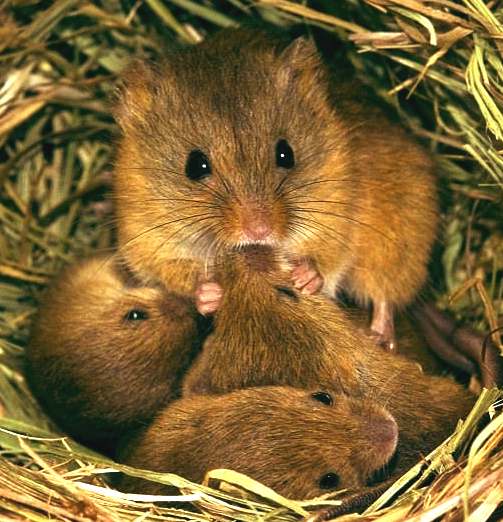
REPRODUCTION
Breeding onset is at about 50 days of age in both females and males, although females may have their first estrus at 2540 days. Mice are polyestrous and breed year round; ovulation is spontaneous. The duration of the estrous cycle is 45 days and estrus itself lasts about 12 hours, occurring in the evening. Vaginal smears are useful in timed matings to determine the stage of the estrous cycle. Mating is usually nocturnal and may be confirmed by the presence of a copulatory plug in the vagina up to 24 hours post-copulation. The presence of sperm on a vaginal smear is also a reliable indicator of mating.
Female mice housed together tend to go into anestrus and do not cycle. If exposed to a male mouse or the pheromones of a male mouse, most of the females will go into estrus in about 72
hours. This synchronization of the estrous cycle is known as the Whitten effect. The exposure of a recently bred mouse to the pheromones of a strange male mouse may prevent implantation (or pseudopregnancy), a phenomenon known as the Bruce effect.
The average gestation period is 20 days. A fertile postpartum estrus occurs 1424 hours following parturition, and simultaneous lactation and gestation prolongs gestation 310 days owing to delayed implantation. The average litter size is 1012 during optimum production, but is highly strain-dependent. As a general rule, inbred mice tend to have longer gestation periods and smaller litters than outbred and hybrid mice. The young are called pups and weigh 0.51.5 g (0.0180.053 oz) at birth, are hairless, and have closed eyelids and ears.
Cannibalism is uncommon, but females should not be disturbed during parturition and for at least 2 days postpartum. Pups are weaned at 3 weeks of age; weaning weight is 1012 g (0.350.42 oz). If the postpartum estrus is not utilized, the female resumes cycling 25 days post-weaning.
Newborn male mice are distinguished from newborn females by noting the greater anogenital distance and larger genital papilla in the male. This is best accomplished by lifting the tails of littermates and comparing
perineums.
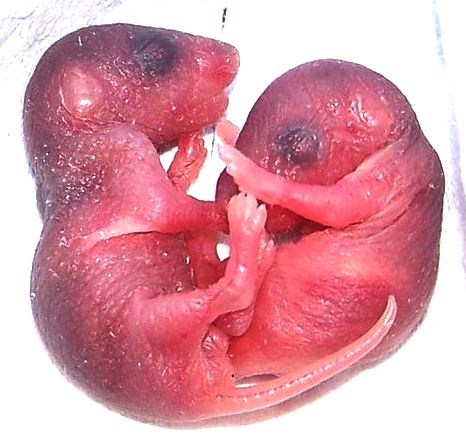
PETS
Many people buy mice as companion pets. They can be playful, loving and can grow used to being handled. Like pet rats, pet mice should not be left unsupervised outside as they have many natural predators, including (but not limited to) birds,
lizards, cats, and
dogs. Male mice tend to have a stronger odor than the females. However, mice are careful groomers and as pets they never need bathing. Well looked-after mice can make ideal pets. Some common mouse care products are:
Cage Usually a hamster or gerbil cage, but special mouse cages are now available.
Food Special pelleted and seed-based food is available. Mice can generally eat most rodent food (for rats, mice, hamsters, gerbils, etc.)
Bedding Usually made of hardwood pulp, such as aspen, sometimes from shredded, uninked paper or recycled virgin wood pulp. Using corn husk bedding is avoided because it promotes Aspergillis fungus, and can grow mold once it gets wet, which is rough on their feet.
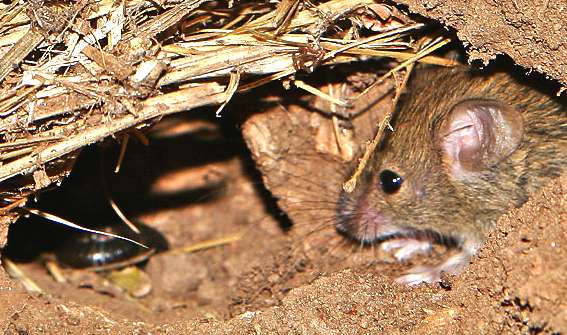
NUTRITIONAL REQUIREMENT
In nature, mice are largely herbivores, consuming any kind of fruit or grain from plants. However, mice adapt well to urban areas and are known for eating almost all types of food scraps. In captivity, mice are commonly fed commercial pelleted mouse diet. These diets are nutritionally complete, but they still need a large variety of vegetables. Food intake is approximately 15 g (0.53 oz) per 100 g (3.5 oz) of body weight per day; water intake is approximately 15 ml (0.53 imp fl oz; 0.51 US fl oz) per 100 g of body weight per day.
AIRPORT
SECURITY
Israeli scientists have tested mice as a new form of
airport security detector. It consists of three concealed cartridges, each containing eight specially trained mice. If they sense traces of explosives or drugs, they will trigger the alarm. According to the
New Scientist, the mice work four-hour shifts and are more accurate than using dogs or x-ray machines.
FIELD
MICE
The true field mouse is a long tailed Field Mouse or Wood Mouse. it is one of our most endearing
animals in the UK. It is also a vital food source for many of the UKs carnivorous creatures,
and for humans a major pest.
They have brown fur with large eyes and ears for their size. They grow to about 10cm long and weigh 30 grams or so full grown.
The Wood Mouse lives just about anywhere there is food and shelter. It traditionally roams fields, hedgerows, forests and grass lands where it can find plenty of food. They are omnivorous and will eat a range of seeds, berries, invertebrates, worms, carrion and other similar food.
They have a short life in the wild because many other animals prey on them.
They live longer in captivity.
They can reproduce frequently around every 25 days. They give birth to between 4 and 7 mice which are soon out on their own after 4 weeks or so.
They are generally nocturnal animals with superb hearing and vision (hence the large eyes and ears), because of this they are a vital source of food for other larger nocturnal hunters such as owls,
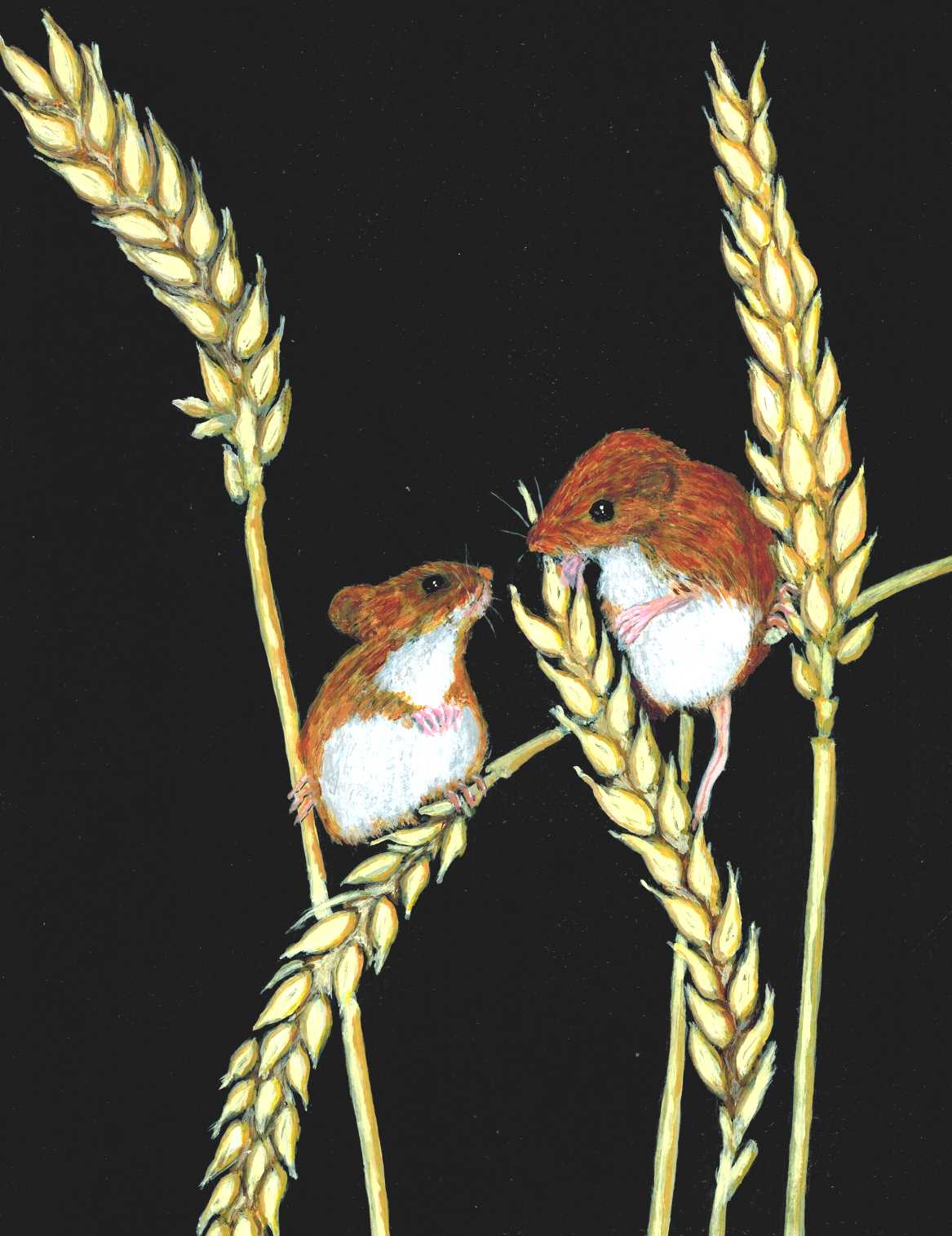
An
original painting in acrylics on paper - 'Field Mice' taking advantage of
the ripening wheat
RODENTS:
|
Beaver
Capybara
Chinchilla
Chipmunk
Dormice
Gerbil
Guinea Pig
Hamster
Mice
Porcupine
Prairie
Dog
Rat
Squirrel
Vole
|
OTHER
ANIMALS:
POPULAR
MAMMALS:
BIRD
INDEX:
|
Albatros
Bishop,
Orange
Blue
Bird
Canary
Chaffinch
Chicken
Cockatoo
Corella, Long-Billed
Cormorant
Crane, African Crowned
Crane
Crow
Cuckoo
Dodo
Dove
Duck
Eagle
Egret, Cattle
Emu
Falcon
Finch
Fishers Lovebird
Flamingo
Grebe
Goose, Egyptian
Grouse
Guinea Fowl, Helmeted
Hammerkop
Hawk
Hornbill, Wreathed
Hornbill, Red-Billed
Hottentot, Teal
House
Martin
Ibis, Hadada
Ibis,
Sacred
Kite, Black
Kingfisher
|
Kiwi
Kookaburra
Lapwing Plover
Lilac-Breasted
Roller
Loon
Macaw
Mynah
Nightjar
Ostrich
Owl
Parrot,
Amazon
Parrot
Partridge
Peacock
Pelican
Penguin
Petrel
Pheasant
Pigeon
Quail
Robin
Roller, Blue-Bellied
Seagull
Sparrow
Spoonbill African
Starling
Stork
Swan
Swift
Toucan
Turkey
Vulture, Griffon
Wader
Weaver, Taveta Golden
Woodcock
Woodpecker
|
POPULAR
INSECTS:
|
Ants
Apid
Army
Ant
Bee
Beetles
Bulldog
Ant
Butterfly
Centipede
Cockroach
Crickets
Damsel
Fly
Death
Watch Beetle
Dragonfly
Dung
Beetle
Earwig
Fly
Grasshopper
Hornet
|
Ladybird
Leafcutter
Ant
Locust
Mantis,
Preying
Maybug
Millipede
Mosquito
Moth
Praying
Mantis
Scarab
Beetle
Stag
Beetle
Stick
Insect
Termite
Wasp
Water
Boatman
Wood
Ant
Woodlice
Woodworm |
John
Storm and Kulo Luna $billion dollar whale
When
a pirate whaler kills a small humpback whale, a larger
whale sinks the pirate ship to avenge the death, but is
itself wounded. The pirates put a price on the whale's
head, but an adventurer in an advanced solar powered
boat races to beat the pirates and save the wounded
animal.

This
modern adventure story by Jameson Hunter is due to be
released in 20 14
with hopes for a film in 2015.
|
